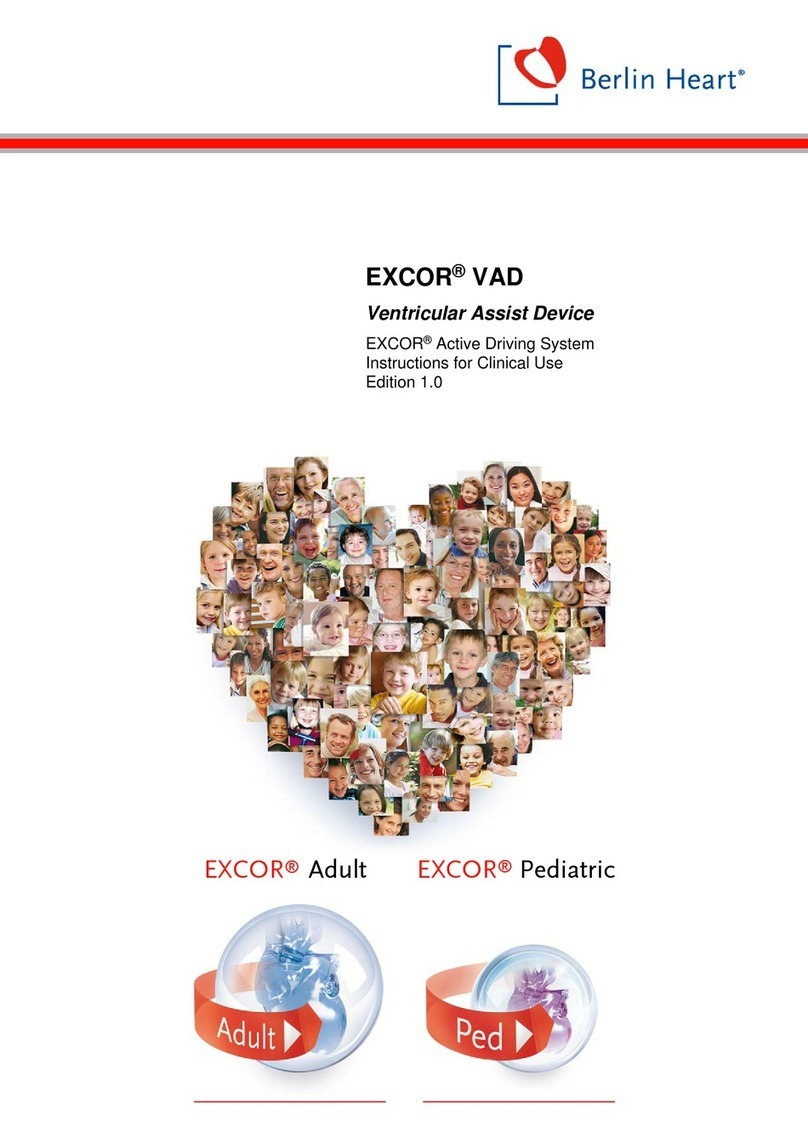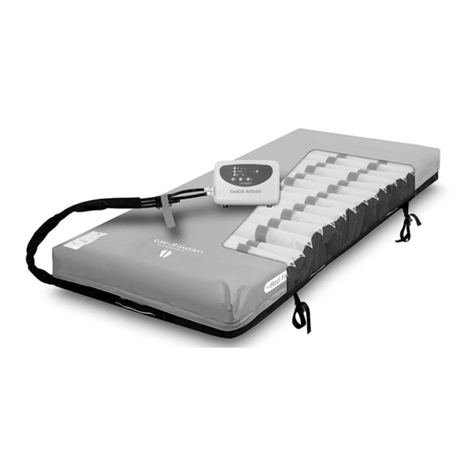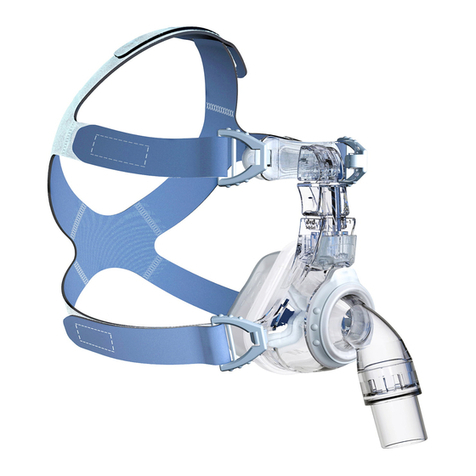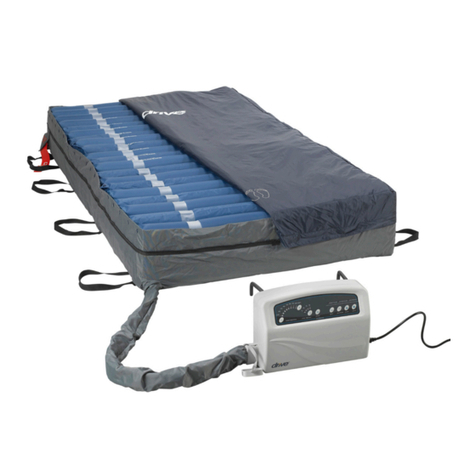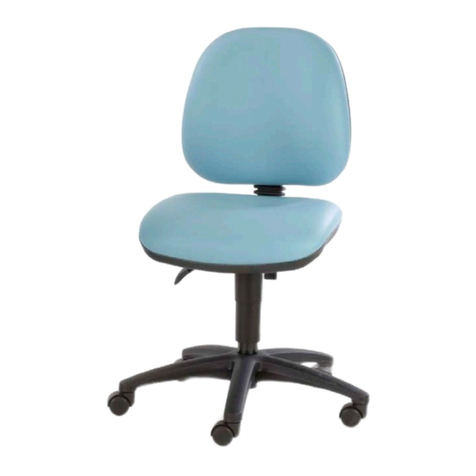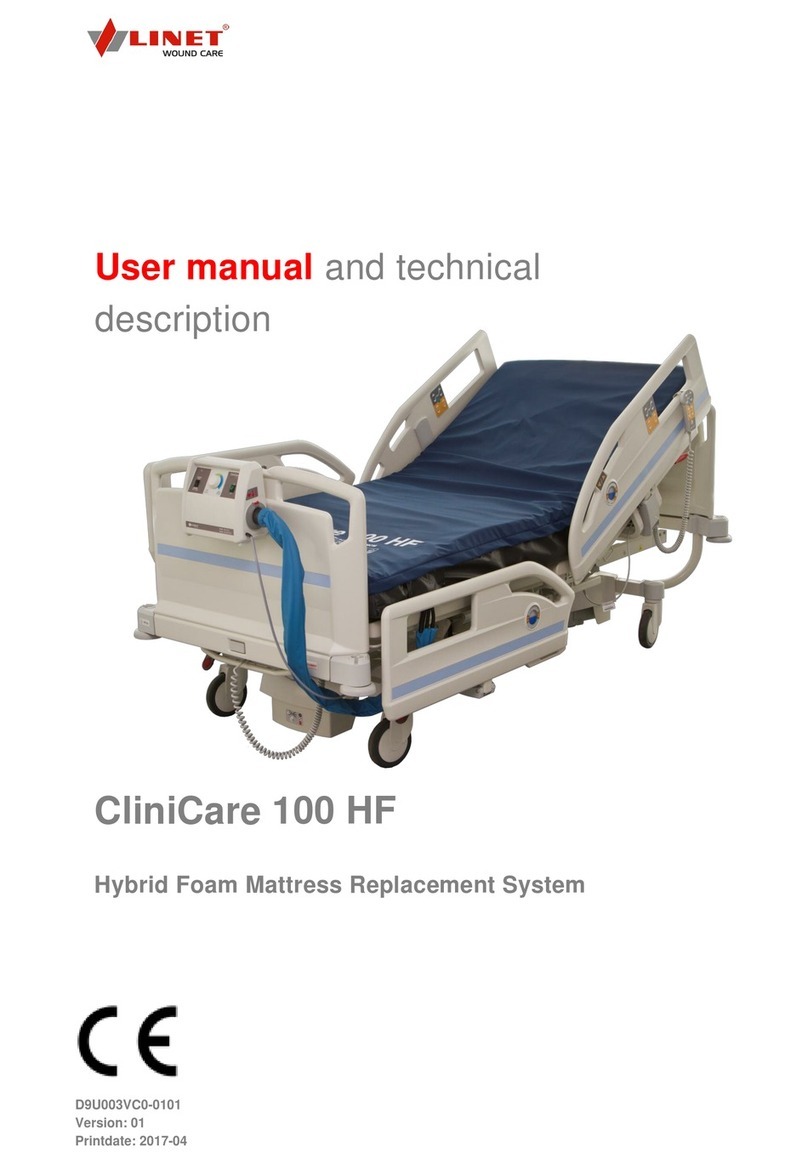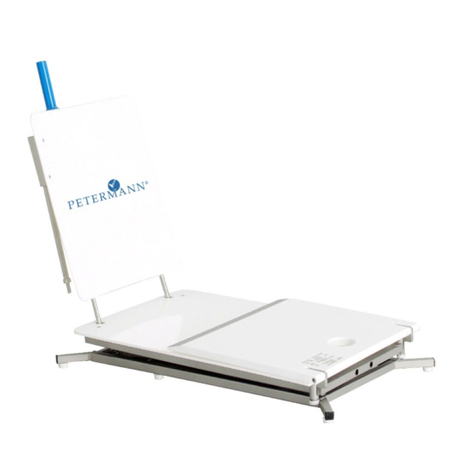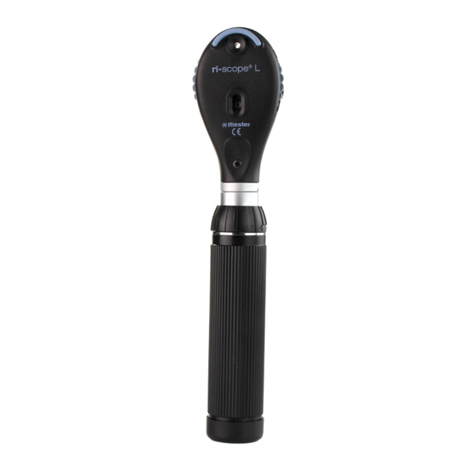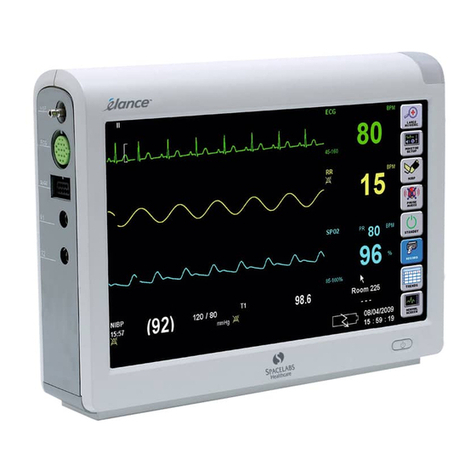Berlin Heart EXCOR Pediatric VAD User manual

EXCOR®Pediatric VAD
Ventricular Assist Device
with
Stationary Driving Unit Ikus Rev. 2.1
Instructions for Use 1000721x09 Revision 8
For products in USA:
Humanitarian Device. Authorized by Federal law for use in the treatment of pediatric patients
with severe isolated left ventricular or biventricular dysfunction who are candidates for cardiac
transplant and require circulatory support. The effectiveness of this device for this use has not
been demonstrated.
1000721x09 Revision 8

This page was left blank intentionally
1000721x09 Revision 8

HOTLINE Notify Berlin Heart! 866.249.0128
This instruction for use corresponds to the following product versions:
This instruction for use (IFU) may not be reproduced, transmitted, transferred onto an electronic medium,
stored in an electronic data processing system nor translated into another language, either in parts or as
a whole, without the express prior written permission of Berlin Heart GmbH. Excluded are the sample co-
pies contained in this instruction for use.
This instruction for use is intended for information purposes only. The contents of the instruction for use
may be supplemented, modified or updated at any time without prior notice.
Any previous versions of the IFU become obsolete upon release of this version.
Licenses, trademarks and trade names
, and EXCOR® are trademarks of Berlin Heart GmbH. They are protected by the relevant
legislation in Germany and other countries.
All other trademarks or brands mentioned in this instruction for use are acknowledged as being the pro-
perty of the respective owners. These rights are specifically recognized and respected whenever such
trademarks or brands are mentioned in this instruction for use.
Text and layout
Berlin Heart GmbH
• Ikus software from V 3.41 forward
• Laptop software from V 3.50 forward
• Laptop from CF30 forward
Manufacturer
Berlin Heart GmbH
Wiesenweg 10
12247 Berlin
Germany
www.berlinheart.com
Imprint
2015-08
Berlin Heart GmbH
Wiesenweg 10
12247 Berlin
Germany
All rights reserved.
Distributor
Berlin Heart, Inc
200 Valleywood, Suite B100
The Woodlands, TX 77380
USA
Office Phone: 1.281.863.9700
Office Fax: 1.281.863.9701
1000721x09 Revision 8

This page was left blank intentionally
1000721x09 Revision 8

Content
Content
Dear readers, 1
1 Important safety information 3
1.1 Warnings ............................................................................................................................ 3
1.1.1 Storage and durability ................................................................................................... 4
1.1.2 Transport within the clinic .............................................................................................. 4
1.1.3 Device configurations .................................................................................................... 5
1.1.4 Procedural techniques - Ikus ......................................................................................... 5
1.1.5 Packaging and sterilization............................................................................................ 7
1.1.6 Procedural techniques - pumps, cannulae, accessories ............................................... 8
1.1.7 System ........................................................................................................................ 12
1.1.8 Procedures to minimize risk of thrombosis.................................................................. 13
1.1.9 Cleaning the components............................................................................................ 13
1.1.10 Maintenance ................................................................................................................ 14
1.1.11 Errors and corrective measures .................................................................................. 14
1.1.12 Replacing the blood pump(s)....................................................................................... 16
1.1.13 Driving blood pump(s) with the manual pump ............................................................. 16
1.1.14 Ambient conditions ...................................................................................................... 17
1.1.15 Interaction with other procedures and therapies ......................................................... 17
1.2 Precautions....................................................................................................................... 18
1.2.1 VAD placement technique ........................................................................................... 18
1.2.2 Ambient conditions ...................................................................................................... 19
1.2.3 Caution while on device support.................................................................................. 19
1.2.4 Transport outside the clinic.......................................................................................... 20
1.2.5 Battery replacement and disposal ............................................................................... 20
1.3 Obligations of the operator ............................................................................................... 20
2 General Information 21
2.1 Device description ............................................................................................................ 21
2.2 Indications for use ............................................................................................................ 21
2.3 IDE Clinical Study Summary ............................................................................................ 21
2.4 Intended operation environment....................................................................................... 21
2.5 Contraindications.............................................................................................................. 22
2.6 Potential adverse events .................................................................................................. 22
2.7 Storage and durability.......................................................................................................22
2.8 Battery replacement and disposal .................................................................................... 23
2.9 Manufacturer’s warranty ................................................................................................... 23
3 Summary of Clinical Studies 25
3.1 Indications for use ............................................................................................................ 25
3.2 Contraindications.............................................................................................................. 25
3.3 Alternative Practices or Procedures ................................................................................. 25
3.4 Marketing History.............................................................................................................. 25
3.5 Potential Adverse Effects ................................................................................................. 25
3.6 IDE Clinical Study............................................................................................................. 28
3.6.1 IDE Clinical Study Summary ....................................................................................... 28
3.6.2 Study Cohorts..............................................................................................................28
3.6.3 Inclusion/Exclusion Criteria ......................................................................................... 29
3.6.4 Study Enrollment ......................................................................................................... 30
3.6.5 Subject Demographics ................................................................................................ 32
3.6.6 Results ........................................................................................................................ 35
3.6.6.1 Probable Benefit.......................................................................................................... 35
3.6.6.2 Primary Safety ............................................................................................................. 43
3.6.6.3 Death information ........................................................................................................46
1000721x09 Revision 8

Content
3.6.7 Conclusion................................................................................................................... 47
3.7 Post Approval Study Summary......................................................................................... 48
3.7.1 Study Objective ........................................................................................................... 48
3.7.2 Study Design ...............................................................................................................48
3.7.3 Study Population ......................................................................................................... 48
3.7.4 Data source ................................................................................................................. 49
3.7.5 Key Study Endpoints ................................................................................................... 49
3.7.6 Total number of Enrolled Study Sites and Subjects, Follow-up Rate .......................... 49
3.7.7 Study visits and length of follow-up ............................................................................. 49
3.7.8 Results ........................................................................................................................ 50
3.7.8.1 Primary Safety ............................................................................................................. 50
3.7.8.2 Primary Efficacy Endpoints.......................................................................................... 51
3.7.8.3 Study Strength and Weaknesses ................................................................................ 52
4 Description: blood pump, cannulae and accessories 53
4.1 EXCOR blood pumps ....................................................................................................... 54
4.2 EXCOR cannulae ............................................................................................................. 54
4.3 EXCOR accessories......................................................................................................... 55
5 Description: Ikus 57
5.1 Overview........................................................................................................................... 57
5.2 Displays and operating elements ..................................................................................... 58
5.2.1 Connection panel ........................................................................................................ 58
5.2.2 Display and operating panel ........................................................................................ 61
5.2.3 Power supply ...............................................................................................................61
5.3 Operating modes ..............................................................................................................62
5.3.1 Univentricular operation............................................................................................... 62
5.3.2 Biventricular operation................................................................................................. 62
5.4 Laptop computer with monitor program............................................................................ 63
5.5 Safety ............................................................................................................................... 63
5.5.1 Redundant design of pneumatic systems in univentricular operation ......................... 63
5.5.2 Redundant design of pneumatic systems in biventricular operation ........................... 64
5.5.3 Control computer with redundancy design .................................................................. 64
5.5.4 Battery operation ......................................................................................................... 65
5.5.5 Manual pump............................................................................................................... 65
5.5.6 Password-protected user profiles (access passwords) ............................................... 65
6 Instructions for use: Ikus 67
6.1 Start menu ........................................................................................................................ 68
6.1.1 Selecting an option in the start menu .......................................................................... 69
6.1.2 Configuring user passwords ........................................................................................ 69
6.1.3 Saving data on USB stick ............................................................................................ 71
6.1.4 Changing date or time ................................................................................................. 71
6.2 Basic instructions for monitor program ............................................................................. 71
6.2.1 Starting the monitor program....................................................................................... 71
6.2.2 Shutting down the monitor program ............................................................................ 72
6.2.3 Logging in and out of the monitor program.................................................................. 72
6.2.4 Logging in .................................................................................................................... 72
6.2.5 Standard view – monitor program ............................................................................... 73
6.2.6 Selecting monitor program options.............................................................................. 74
6.2.7 Adjusting the parameter values................................................................................... 76
6.2.8 Browsing in the message window ............................................................................... 77
6.3 Stopping the blood pump(s) and switching off the Ikus .................................................... 77
6.3.1 Drive pause: stopping the Ikus temporarily ................................................................. 77
6.3.2 Pause left/ Pause right: stopping an individual blood pump ........................................ 78
6.3.3 Drive OFF: switching the Ikus off................................................................................. 78
6.4 Switching between mains and battery operation .............................................................. 79
1000721x09 Revision 8

Content
6.5 Changing over from univentricular to biventricular operation ........................................... 82
6.5.1 Routine start-test when not in operation...................................................................... 83
6.6 Moving the Ikus ................................................................................................................ 84
6.7 Transportation and packaging .......................................................................................... 84
6.7.1 Unloading the Ikus from the shipping crate ................................................................. 85
6.7.2 Loading the Ikus into the shipping crate ...................................................................... 86
6.8 Cleaning and disinfection of the Ikus................................................................................ 90
7 Commissioning the Ikus and setting parameters 93
7.1 Preparatory steps outside of the operating room ............................................................. 93
7.1.1 Connecting the tank unit.............................................................................................. 94
7.1.2 Switching on the Ikus .................................................................................................. 95
7.1.3 Starting the monitor program....................................................................................... 95
7.1.4 Setting the test parameters ......................................................................................... 95
7.2 Intraoperative drive management..................................................................................... 97
7.2.1 Disconnecting the tank unit from the Ikus.................................................................... 97
7.2.2 Selecting the operating mode (view Select operating mode) ...................................... 97
7.2.3 Select the pump size ................................................................................................... 98
7.2.4 Select the cannula size ............................................................................................... 98
7.2.5 Display pump and cannula sizes ................................................................................. 99
7.2.6 Setting the start-up parameters ................................................................................. 100
7.2.7 Connecting the blood pump(s) to the Ikus................................................................. 101
7.2.8 De-airing the blood pumps in single-step mode ........................................................ 102
7.2.9 Starting the blood pump (changing to standard view) ............................................... 102
7.2.10 Checking the parameters when the pump is started and adjusting them.................. 103
7.2.11 Switching from CPB support to VAD support ............................................................ 105
7.2.12 Possible complications .............................................................................................. 106
7.3 Postoperative drive management................................................................................... 107
7.3.1 After transfer to the ward ........................................................................................... 107
7.3.2 Follow-up treatment................................................................................................... 107
8 Implantation: Preparations in the operating room 109
8.1 Preparing the components and materials required......................................................... 109
8.2 Checking and adjusting the settings of the cable tie gun ............................................... 109
8.3 Unpacking the sterile components ................................................................................. 111
8.4 Moving the membrane to the end-of-diastole position.................................................... 112
8.5 De-airing the blood pump ............................................................................................... 112
8.5.1 Inserting the de-airing needle .................................................................................... 113
8.5.2 Rinsing and filling the blood pump............................................................................. 113
9 Implantation - surgical procedure 115
9.1 Cannula exit sites ........................................................................................................... 116
9.2 Use of the cannula tunneling tip ..................................................................................... 117
9.3 Cannulae, cannula extension set and connecting set .................................................... 117
9.3.1 Description: Cannula extension and connecting sets................................................ 118
9.3.2 Instructions for Use: Cannula extension set and connecting set............................... 119
9.4 Access ............................................................................................................................ 121
9.5 LV apex cannula............................................................................................................. 121
9.5.1 Anastomosis of inflow cannula with LV apex............................................................. 122
9.5.2 Creating a transcutaneous tunnel for the LV apex cannula....................................... 123
9.6 Atrial cannula(e) ............................................................................................................. 124
9.6.1 Creating a transcutaneous tunnel for atrial cannula(e).............................................. 124
9.6.2 Anastomosis of atrial cannulae.................................................................................. 125
9.7 Arterial cannula(e) .......................................................................................................... 126
9.7.1 Creating a transcutaneous tunnel for arterial cannula............................................... 126
9.7.2 Anastomosis of the arterial cannula .......................................................................... 127
9.8 Shortening the cannulae if necessary ............................................................................ 128
1000721x09 Revision 8

Content
9.9 Connecting the blood pumps to the cannulae ................................................................ 128
9.10 Removing the de-airing needle....................................................................................... 130
9.11 Securing the connections ............................................................................................... 130
10 Implantation - anesthesia 133
11 Wound care and treatment 135
11.1 Removing the old dressings ........................................................................................... 136
11.2 Cleaning the blood pump................................................................................................ 137
11.3 Cleaning of the wound.................................................................................................... 137
11.4 The new dressing ........................................................................................................... 138
11.4.1 Preparing a new dressing.......................................................................................... 138
11.4.2 Applying a new dressing............................................................................................ 138
11.5 Regular checks of blood pump(s) and cannulae ............................................................ 141
11.5.1 Visual inspection: pump filling and ejection ............................................................... 141
11.5.2 Visual inspection: deposits ........................................................................................ 142
11.5.3 Checks using the monitor program............................................................................ 143
11.5.4 Replacing the blood pump due to growth of the patient ............................................ 144
12 Anticoagulation therapy 145
12.1 Before Implantation of the EXCOR................................................................................. 145
12.1.1 General considerations.............................................................................................. 145
12.1.2 Pre implantation ........................................................................................................ 145
12.2 During Implantation - Cardiopulmonary Bypass ............................................................. 145
12.2.1 Cardiopulmonary Bypass (CPB)................................................................................ 145
12.2.2 Post CPB................................................................................................................... 145
12.3 Postoperative anticoagulation therapy ........................................................................... 145
12.3.1 General Considerations............................................................................................. 145
12.3.2 Starting anticoagulation therapy ............................................................................... 145
12.3.3 Unfractionated heparin therapy (i.v.) Patient < 12 months ........................................ 146
12.3.4 Unfractionated heparin therapy (i.v.) Patient ≥12 months ........................................ 146
12.3.5 Thrombelastography (TEG®) .................................................................................... 147
12.4 Low Molecular Weight Heparin....................................................................................... 147
12.5 Oral Anticoagulation Therapy (only for patients ≥12
months of age who are taking a full oral diet)................................................................. 147
12.6 Monitoring of Blood Count and Anticoagulation Status .................................................. 148
12.7 Postoperative platelet inhibition therapy......................................................................... 148
12.7.1 Start of therapy .......................................................................................................... 148
12.8 Adjunctive Medication .................................................................................................... 149
12.9 Anticoagulation Therapy................................................................................................. 149
12.9.1 Therapeutic Heparin administration and adjustment ................................................. 149
13 Weaning and Explantation for BTR and BTT 153
13.1 Weaning Procedure........................................................................................................ 153
13.1.1 Introduction................................................................................................................ 153
13.1.2 Indication .................................................................................................................. 153
13.1.3 Eligibility Criteria ........................................................................................................ 153
13.1.4 Weaning Protocol ...................................................................................................... 154
13.1.5 10 ml / 15 ml pump .................................................................................................... 154
13.1.6 25 / 30 ml pump......................................................................................................... 158
13.1.7 50 / 60 ml pump......................................................................................................... 162
13.1.8 Explantation Criteria .................................................................................................. 166
13.2 Explantation for BTR ...................................................................................................... 167
13.2.1 Explantation with univentricular support .................................................................... 167
13.2.2 Explantation after biventricular support ..................................................................... 167
13.3 Explantation for BTT....................................................................................................... 168
1000721x09 Revision 8

Content
14 Error Messages and corrective measures 171
14.1 Pressure error / time error in system 1 (or in system 2 or 3) .......................................... 173
14.2 Throttle valve error in system 1 (or system 2 or 3) ......................................................... 173
14.3 Please connect driving tube ........................................................................................... 174
14.3.1 Replacing a driving tube ............................................................................................ 174
14.4 Please check left / right pump and driving tube ............................................................. 175
14.5 Backup operation left/right.............................................................................................. 176
14.6 Error messages in emergency operating mode.............................................................. 176
14.6.1 UVAD, emergency operation!. Contact service immediately!.................................... 176
14.6.2 Emergency operation system 1 (or system 2 or 3). Contact Service now!................ 177
14.7 System 1 (or system 2) is defective!............................................................................... 177
14.8 System 3 (backup) is defective!...................................................................................... 178
14.9 Alarm circuit fault: buzzer remains off (or on)................................................................. 178
14.10 Backup computer faulty! Contact customer service. ...................................................... 178
14.11 Backup computer............................................................................................................ 179
14.11.1 ... reports discrepancy in left/right pump output measurements!............................... 179
14.11.2 ... reports faulty measurements on the left (or right).................................................. 179
14.11.3 ... reports an error in output measurement on the left (or right) pump....................... 179
14.11.4 ... reports faulty test ................................................................................................... 180
14.12 Measurement discrepancy in main computer (backup computer).................................. 180
14.13 Parameter set update failure .......................................................................................... 181
14.14 Temperature sensors: <<8-digit binary code>>.............................................................. 181
14.15 Fault: <<16-digit binary code>> (<<type of fault>>) ....................................................... 182
14.16 Batteries discharged; battery operation not possible...................................................... 182
14.17 Insufficient battery charge. Only limited battery operation.............................................. 183
14.18 Error messages - Circuit breaker and internal battery fuse ............................................ 183
14.19 Electronic malfunction. Contact customer service!......................................................... 183
14.20 Acoustic alarm is not properly recognized...................................................................... 184
14.21 Error: no data/no reaction from the control computer..................................................... 184
14.22 Left/right flow sensor defective. Notify Service!.............................................................. 185
14.23 Problem: <<Text>>......................................................................................................... 186
14.24 Self-test is not completed by passive computer! ............................................................ 186
14.25 Error messages during the start-up test ......................................................................... 187
14.25.1 Battery test skipped (Battery problem!) ..................................................................... 187
14.25.2 Additional messages during the start-up test ............................................................ 187
14.26 Discrepancy in pressure measurement: system 1 (or system 2 or 3) ............................ 188
14.27 Communication with Laptop failed.................................................................................. 189
15 Troubleshooting and correcting faults 191
15.1 Replacing the blood pump(s).......................................................................................... 195
15.1.1 Preparing a replacement blood pump ....................................................................... 195
15.1.2 Replacing the right blood pump (RVAD/ BVAD)........................................................ 196
15.1.3 Replacing the left blood pump (LVAD/ BVAD) .......................................................... 197
15.2 Restarting Ikus................................................................................................................ 198
15.3 Emergency pulse mode.................................................................................................. 200
15.3.1 Emergency pulse mode - switching the Ikus off ........................................................ 201
15.3.2 Ikus start-test following emergency pulse mode........................................................ 201
15.4 Connecting the patient to a replacement Ikus ................................................................ 202
15.5 Driving blood pump(s) with the manual pump ................................................................ 204
15.6 Mains failure or breakdown of both control computers................................................... 206
15.7 Reading out the LOG files .............................................................................................. 207
15.8 Circuit breaker and battery fuse ..................................................................................... 208
16 Appendix 211
16.1 Overview: Product range and possible combinations..................................................... 211
16.1.1 Blood pumps ............................................................................................................. 211
16.1.2 Overview: Relationship: body weight – pump size .................................................... 211
1000721x09 Revision 8

Content
16.1.3 LV apex cannulae...................................................................................................... 212
16.1.4 Atrial cannulae........................................................................................................... 212
16.1.5 Arterial cannulae ....................................................................................................... 212
16.1.6 Overview: Which cannulae should be used for which pump? ................................... 214
16.1.7 System accessories................................................................................................... 215
16.1.8 Driving unit ................................................................................................................ 215
16.1.9 Special components .................................................................................................. 215
16.1.10 Maximum rates for the pump-cannula combinations................................................ 216
16.1.11 Blood pump combinations in biventricular mode ....................................................... 217
16.1.12 Relative systolic duration........................................................................................... 217
16.2 Technical specifications.................................................................................................. 217
16.3 Symbols and tags ........................................................................................................... 220
16.4 Sample copy: Ikus Incoming Checklist ........................................................................... 221
16.5 Implantation record form................................................................................................. 222
16.6 Sample copy: EXCOR pump log .................................................................................... 227
16.7 Pump performance flow sheet........................................................................................ 230
17 EMC tables 231
17.1 Essential Performance ................................................................................................... 231
17.2 Electromagnetic emissions............................................................................................. 231
17.3 Electromagnetic immunity - part 1 .................................................................................. 231
17.4 Electromagnetic immunity - part 2 .................................................................................. 232
17.5 Recommended separation distances between portable
and mobile RF communications equipment and the Ikus............................................... 234
Index 237
1000721x09 Revision 8

Chapter Dear readers,
Dear readers,
This Instructions for Use is intended for all medical personnel involved in caring for a
patient who is being supported by an EXCOR®Pediatric VAD (referred to as EXCOR
in this instruction for use).
The instruction for use provides information on the structure, principle of operation and
application of the EXCOR in conjunction with the Stationary Driving Unit Ikus (referred
to as Ikus in this instruction for use). To ensure patient safety and comfort, please read
the instruction for use carefully.
A Physicians Manual and the EXCOR Pediatric training slides are available as an
additional resource for the medical personnel that are involved in caring for a patient
who is being supported by an EXCOR®Pediatric VAD. Additionally, urgent clinical and
technical assistance is available via the Berlin Heart Emergency Hotline. You can
reach us 24 hours per day, 365 days per year at 866-249-0128.
Always make sure that only professional medical personnel who have been
specifically trained in the use of the product are permitted to work with EXCOR.
Note: The recommendations in this manual are based on Berlin Heart‘s experience
with the EXCOR. The decisions related to implantation, the components to be used,
and patient care remain with the patient’s physicians.
The following pictograms and symbols are used in this instruction for use:
DANGER Indicates a hazardous situation which, if not avoided, will result in
death or serious injury to the patient.
WARNING Indicates a hazardous situation which, if not avoided, could result in
death or serious injury to the patient.
CAUTION
Indicates a hazardous situation which, if not avoided, could result in
minor or moderate injury to the patient and/ or damage to the device.
NOTICE Notes are practices not related to personal injury. Possible damage to
the device.
ADVICE This symbol identifies measures and procedures which have proved
useful and successful in conjunction with EXCOR and which we
therefore recommend.
HOTLINE Notify Berlin Heart! 866.249.0128
This is the telephone number of the emergency hotline. The hotline desk is in
operation 24 hours a day. This number is intended for use by medical personnel and
should be used in cases of emergency only.
INSTRUCTION
1. Individual steps of the instructions are numbered in sequential order.
1000721x09 Revision 8 1

Chapter Dear readers,
Term definitions
Product life
How long the product can be used. No maintenance or repairs are performed after this
date. With unsterile products, the product life starts on the day of (initial) shipment;
with sterile products it starts on the day of implantation. All sterile products are for
single use only.
Expiration date
How long the unused sterile product reliably maintains sterile. The device should not
be used if the expiration date is past.
Maintenance interval
Interval in which the product needs to be serviced.
Warranty
In the case of justified claims, the company must choose to either repair or exchange
the defective goods within a reasonable period of time. The buyer will be entitled to
cancel or to reduce the order, in accordance with legal regulations, only when the
defective goods should repeatedly fail or be deemed unacceptable. The buyer may
not rectify the defects under any circumstances. The buyer is entitled to claims for
defects only in accordance with item 5.5 of the General Business Terms and
Conditions. (for additional information see section 5 of the Terms and Conditions)
Warranty period
All warranty claims expire after 12 months, calculated from the time that risk is
transferred (for additional information see section 5 of the General Terms and
Conditions).
The precise application on the individual components of the EXCOR will be described
in section 2.1: Device description, page 21.
Definition of the used font formates
Description Meaning
bold, blue software texts (messages and menus) except in headings and
lists
"text" quotation
<key> key on the laptop keyboard
<<filler text>> e.g. if texts in error messages are various
[dimension unit] dimension units in tables; e.g. [mmHg]
1000721x09 Revision 82

Chapter 1 Important safety information
1 Important safety information
1.1 Warnings
WARNING Before using EXCOR, read the Instructions for Use carefully.
Only qualified medical personnel trained specifically in the use of the
system are permitted to work with EXCOR. Training courses can be
arranged with Berlin Heart, Inc. Use by untrained personnel can pose
a risk to the patient and the EXCOR.
Before starting the Ikus, make sure that a replacement Ikus is available
in the hospital. If a replacement Ikus is not available, there is a risk that
the patient cannot be cared for in the event of device malfunction.
The general rule is:
1 replacement Ikus if 1 or 2 systems are in use,
2 replacement Ikus if 3 or 4 systems are in use,
3 replacement Ikus if 5 or 6 systems are in use.
If more than 6 systems are in use the number of replacement Ikus has
to be 1/2 of the active systems.
On the system EXCOR only use components of this system. Never use
other components than those delivered by Berlin Heart GmbH/ Berlin
Heart Inc. Otherwise the warranty is no longer valid.
The Ikus and the components of the EXCOR system must not be
modified. Otherwise the secure function of the system can not be
guaranteed.
The Ikus should not be used adjacent to or stacked with other
equipment. If adjacent or stacked use is necessary, the Ikus should be
observed to verify normal operation in the configuration in which it will
be used.
The system EXCOR Pediatric and its components are permitted to be
used only by prescription of the attending physician.
To ensure the safety of the patient supported with the EXCOR pediatric
the patient should be supervised by qualified medical personnel who
have been trained on the use of the system.
Do not use the EXCOR if there is any visable damage of the Ikus or any
of its components.
If there is any malfunction of the Ikus while the driving unit is connected
to the patient, the Ikus must immediately be replaced.
1000721x09 Revision 8 3

Chapter 1 Important safety information
1.1.1 Storage and durability
WARNING The expiration date of each EXCOR product is found on the product
labels located on both the outer and inner packaging. The pumps,
cannulae and accessories must not be used after the expiration date
and even not be re-sterilized. Otherwise there is a risk of patient
infection.
An EXCOR blood pump may not be used on a patient for more than 1
year. After this it shall be replaced with new products.
1.1.2 Transport within the clinic
WARNING To move the Ikus unit: push only, using the handle provided for this
purpose. Avoid any sudden jerky motion. When passing over smaller
obstructions, exercise extreme caution, pulling the Ikus unit backwards
(i.e. handle first) across the obstruction if necessary.
To lift the Ikus: use only the lifting bars at the lower edge at each side
of the unit to hold and lift it. Never attempt to lift the Ikus by its handle.
The Ikus must always be lifted by at least 2 people, preferably 4.
Rolling the Ikus over sloping surfaces: ensure that the person pushing
it is strong enough to push the Ikus in a controlled manner. The slope
of the surface may not be steeper than 10° (exception: packing/
unpacking of the Ikus into/ from the transport crate). Otherwise there is
a risk of injury to the transporting persons or of damaging the Ikus!
If it is necessary to transport the patient within the clinic ensure that he
is accompanied by a person trained to use the manual pump.
1
1
2
Handle
lifting bar
2
Fig. 1-1 Handle and lifting bar
1000721x09 Revision 84

Chapter 1 Important safety information
1.1.3 Device configurations
WARNING EXCOR was not designed to be used in combination with other
systems, nor do any of the currently granted approvals allow for this.
Use by untrained personnel poses a risk to the patient and to the
EXCOR.
In univentricular operation: Always connect the driving tube of the blood
pump to the red marked connector.
The units may only be operated with the disposable products and
accessories specified in this document. Also see section 16.1:
Overview: Product range and possible combinations, page 211.
Otherwise there is a risk of functional limitation and/or damage to the
Ikus. Failure to observe this stipulation will invalidate all warranty
agreements by Berlin Heart Inc..
The connection between the connector External alarm (Nurse call) and
the internal alarm system of the clinic is not failsafe. The use of this
feature does not release the user from supervising the Ikus and the
displayed messages and alarms.
1.1.4 Procedural techniques - Ikus
WARNING Follow the numbered instructions exactly in their sequential order.
Otherwise there is a risk of functional limitation or Ikus malfunction.
Protect the Ikus unit against dirt and contamination. Prevent foreign
objects from falling or working their way into the connectors and
ventilation slits. Keep all drive tube connectors covered at all times
when not in use. Otherwise there is a risk of functional limitation and/or
damage to the Ikus.
Place the Ikus driving unit on a firm and even surface.
Never place other objects on top of an Ikus driving unit.
When switching on the Ikus, always connect it to the mains power
supply. This is the only way to ensure that the start test (see
section 6.2.1: Starting the monitor program, page 71) is completed and
that possible malfunctions are detected.
1000721x09 Revision 8 5

Chapter 1 Important safety information
Only connect the mains cable of the Ikus driving unit to grounded mains
power outlets.The supply voltage has to conform to the voltage
requirements indicated on the Ikus identification plate. Only connect
the mains cable of the Ikus driving unit to suitable power outlets
complying with the electrical safety regulations of the country in which
it is being used. Otherwise there is a risk of electrical shock or damage
to the EXCOR system!
If there are several electrical devices in the vicinity of the patient, then
these are to be connected to a central grounding point. The connector
Potential equalization is to be used for this on the Ikus. Otherwise there
is a risk of electric shock.
Switch on the Ikus 2 hours before use in order to sufficiently charge the
batteries and to detect possible device errors during the start test see
chapter 7.1.2: Switching on the Ikus, page 95.IMPORTANT: During
this time, always connect both tank units to the Ikus (see section 7.1.1:
Connecting the tank unit, page 94)! Otherwise there is a risk that error
messages are falsely generated.
After switching on the Ikus, pull the key out of the main switch (key
switch) and store it in a safe place.
The Ikus power switch (toggle switch) must be switched on during the
first startup and remain set to [I] position. Its position should never be
changed. Otherwise there is a risk that the batteries will not be fully
charged after battery operation.
The Ikus is designed for stationary operation and to be run on mains
power (referred to as the mains in this instruction for use). Do not run it
on battery operation unless this is absolutely necessary (e. g. when
moving the patient within the clinic or during a mains failure).
Always take the battery capacity limits into consideration when using
the system. When the system is working in battery operation, the
patient must be accompanied by a person trained to use the manual
pump. Thus the patient shall be guaranteed care in an emergency.
The air vents must not be covered or obstructed during operation.
Otherwise the Ikus will not receive sufficient ventilation, which may lead
to overheating. This may lead to malfunctions and a malfunction in
device operation.
1000721x09 Revision 86

Chapter 1 Important safety information
Only disconnect the Ikus from the mains if the charge level indicator
shows that the batteries are completely charged (all yellow LEDs are
lit).
IMPORTANT: In order to prevent rapid and premature ageing of the
batteries, the Ikus must always be run on the mains for at least 6 hours
after using the battery operation. Only after this may the Ikus be run on
battery operation again.
If the LEDs of the charge level indicator are blinking or the message
Batteries discharged - use power supply! appears, immediately
switch to mains operation! If the batteries are completely discharged
(red LED of the charge level indicator is lit) and the drive continues to
run on battery operation, there is the risk of a total malfunction of the
Ikus and damage of the batteries. If this happens, it can not be
guaranteed that the Ikus will restart after connecting it to the mains.
Whenever the Ikus is running in battery operation, the patient must be
accompanied by a person trained to use the manual pump. Thus the
patient shall be guaranteed care in an emergency.
To prevent the batteries from aging quickly, every period of battery
operation should be followed by at least 6 h of mains operation.
When the battery charge is low, the acoustic signal sounds every
minute. The Ikus must be connected to the mains operation
immediately.
Messages are only displayed when the monitor program is running.
When the monitor program is shut down, the only indications that there
is an error message are an acoustic signal and the fact that the
indicator lamp on the Ikus handle lights up. There is no way of finding
out what type of error message has been displayed.
When reading out the log files: Make sure that you always have the
USB stick inserted and that there is sufficient capacity on the stick.
Otherwise the LOG files might get lost as they are deleted from the hard
disk as soon as they have been transferred onto a USB stick.
1.1.5 Packaging and sterilization
WARNING EXCOR blood pumps and cannulae are intended for single-use only.
Otherwise there is a risk of infection.
1000721x09 Revision 8 7

Chapter 1 Important safety information
The sterile components are sterilized using ETO and are packed in a
double-layer sterile package. Check that the various layers of the
sterile packaging are not damaged in any way before they are opened.
Do not use the components if either of the sterile packages are
damaged. The same applies to sterile components which have
exceeded the expiration date as printed on the label. Otherwise there
is a risk that the product is no longer sterile.
EXCOR sterile components may not be resterilized by the user. Any
opened product must be used or sent back to Berlin Heart. If product
expires please contact Berlin Heart for exchange.
An aluminum-coated external packaging protects the Carmeda®
BioActive Surface (CBAS) of the blood pump and its sterile packaging
against fluctuations in relative humidity. Do not use blood pumps with
damaged external packaging. Otherwise there is a risk that the CBAS
coating may be compromised.
The following items are delivered in sterile condition: blood pumps,
cannulae, cannula extension sets / connecting sets, driving tubes, de-
airing set, de-airing hammer, tube connecting set, membrane set.
The external packaging and the outer surface of the outer sterile
packaging are not sterile. These 2 packaging layers must be removed
before the inner sterile packaging containing the product is handed
over to the sterile field. Otherwise there is a risk that the sterile field will
be contaminated.
1.1.6 Procedural techniques - pumps, cannulae, accessories
WARNING The preparation and use of blood pumps should only be performed by
trained personnel. Surgical, nursing and perfusion personnel without
experience in the use of EXCOR must complete the EXCOR Training
Course which provides theoretical introduction and hands-on practical
exercises in the operation of this system. The training program is
organized and offered by Berlin Heart, Inc.
Only use sterile components which have been delivered in undamaged
sterile condition (sterile packaging intact, expiration date not expired).
Only use blood pumps which have an undamaged aluminum-coated
outer packaging.
The long-term storage conditions for all sterile products must be
observed: temperature +15°C to 25°C, relative humidity: 35 % to 50 %.
Store in a dry place! Otherwise there is a risk that the product is no
longer sterile.
1000721x09 Revision 88

Chapter 1 Important safety information
In order to prevent infection, use strict aseptic techniques during
implantation and exercise extreme caution throughout the period of
EXCOR cardiac support. Danger of infection!
The distal end of the cannulae can be trimmed. At least 5 cm (2 inches)
of material without polyester velour covering should remain to allow
visual inspection of the cannula/ titanium-connector junction.
Otherwise there is a risk that possible deposits if formed, cannot be
visualized.
Ensure proper placement of the cannulae, especially with respect to
orientation of the LV apex cannula, to prevent suction of the myocardial
wall.
Prior to initial operation of the blood pump(s) minimal initial start
parameters have to be set on the laptop to ensure smooth transition
from CPB to VAD support.
When connecting the blood pump(s) to the cannulae always observe
the arrows on the inflow and outflow stubs. They show the blood flow
direction. There is a risk of injury to the patient and severe pump
malfunction if the titanium connectors on the end of the inflow and
outflow stubs are not connected to the appropriate cannulae.
Do not touch or manipulate the blood pumps and cannulae with pointed
or sharp-edged objects (surgical instruments, wire brushes, etc.).
Otherwise there is a risk of blood pump and cannula leakage.
Do not touch or manipulate the drive lines with pointed or sharp-edged
objects (surgical instruments, wire brushes, etc.), otherwise these
components could be damaged.
Creating a transcutaneous tunnel for the LV apex cannula: Always use
cannula tunnelling tip, never use a sharp surgical instrument directly on
the cannula.
Cannula extension set and connecting set
WARNING If, on further shortening of the cannula, visual inspection of the titanium
connector on the blood pump is no longer possible: use the cannula
extension set.
The cannula extension set and the connecting set should only be used
if neccessary, since the basic risk of thrombogenesis and deposits
increases each time the cannula is extended.
1000721x09 Revision 8 9

Chapter 1 Important safety information
Do not combine the connecting set with staged cannulae in such a way
that multiple diameters are bridged. Otherwise, the pump will not fill or
empty completely.
Secure each of the connections with at least 1 cable tie. Otherwise, the
connections may loosen over time and the cannula extension set / the
connecting set may become separated from the blood pump.
All effort should be made to minimize the manipulation and distortion of
the blood pumps and cannula during the removal of the cable tie(s) to
prevent mobilization of deposits.
If it is necessary to clamp any other part of the cannula (cannula
extension set / connecting set resp.) that is not covered with velour,
cover the part that will be clamped with a gauze sponge.
When using a cannula extension set / a connecting set it may be
necessary to shorten the respective connecting tube, but the minimum
length must be maintained. See Tab. 1-1, page 10.
Article Diameter /
Diameter reduction
Minimum length
Cannula extension set
A06-006 6 mm 55 mm
A09-009 9 mm 60 mm
A12-012 12 mm 75 mm
Connecting set
A06-009 9 to 6 mm 60 mm
A09-012 12 to 9 mm 75 mm
Tab. 1-1 Cannula extension set / connecting set: minimum length of tube section
WARNING Follow exactly the instructions for using the de-airing set. Otherwise
there is a risk of membrane damage.
Ensure that cannulae, blood pump(s) and driving tubes are not subject
to external forces, like compression, traction or torsion forces, and are
free of knots or sharp bends. Prevent the cannulae and connectors
from being exposed to tensile forces. Otherwise there is a risk of
obstruction of the air and blood flow.
1000721x09 Revision 810
Table of contents
Other Berlin Heart Medical Equipment manuals
Popular Medical Equipment manuals by other brands

AliveCor
AliveCor KardiaMobile AC-019 Instructions for use
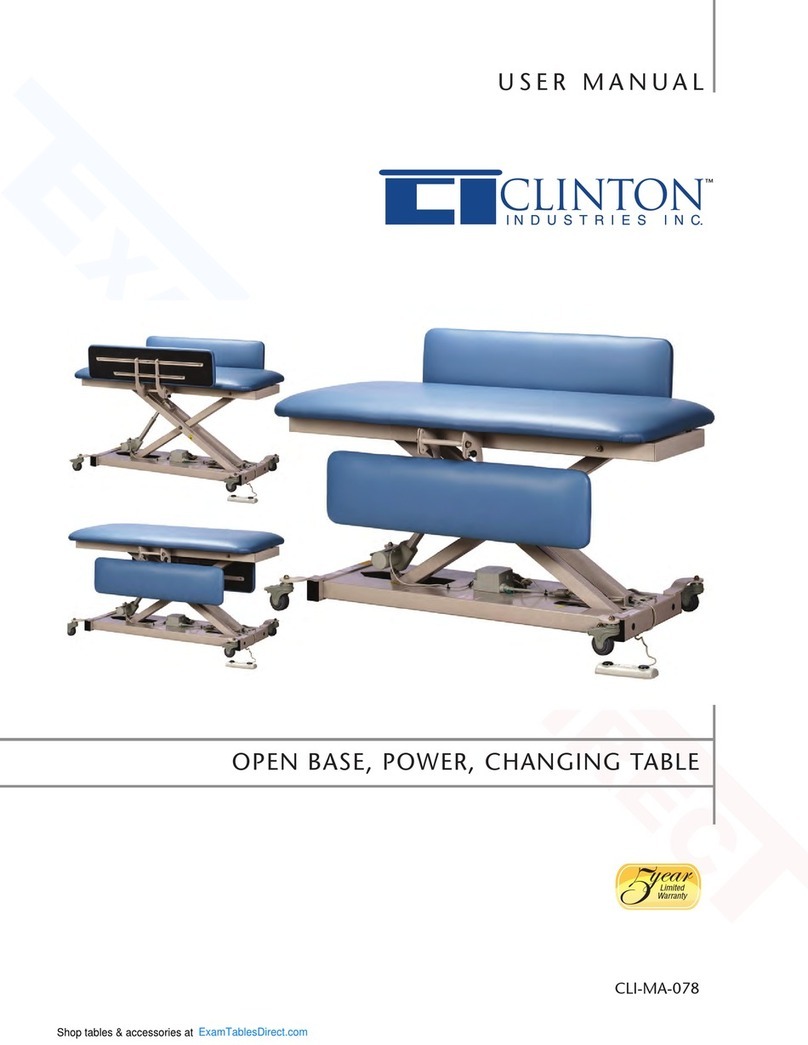
CLINTON INDUSTRIES
CLINTON INDUSTRIES 80110 user manual
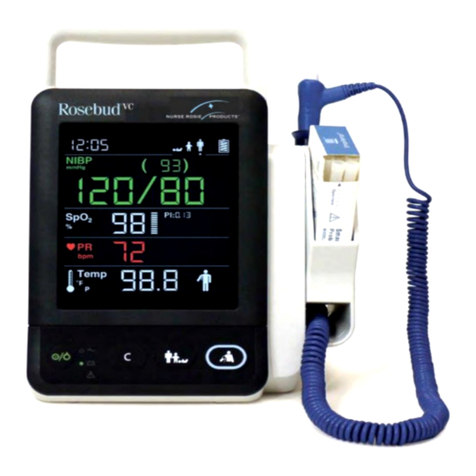
NURSE ROSIE
NURSE ROSIE Rosebud VC troubleshooting guide
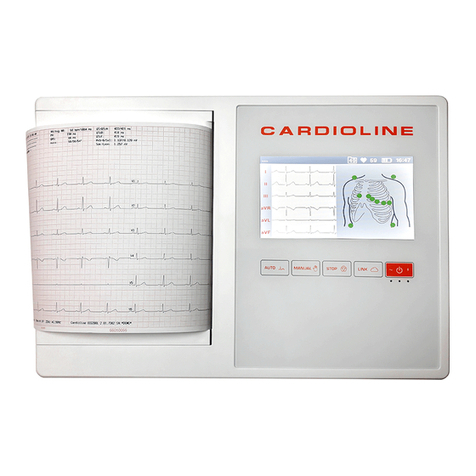
Cardioline
Cardioline ECG200L user manual
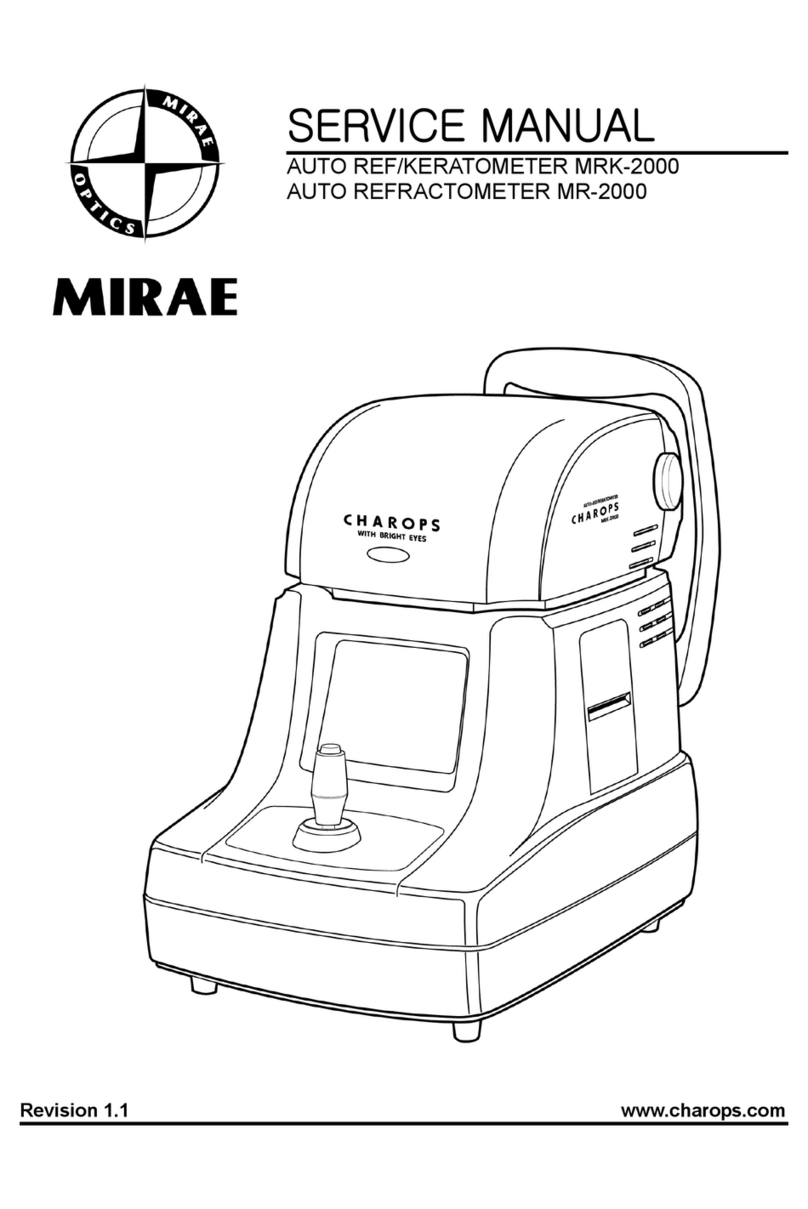
Mirae
Mirae CHAROPS MRK-2000 Service manual
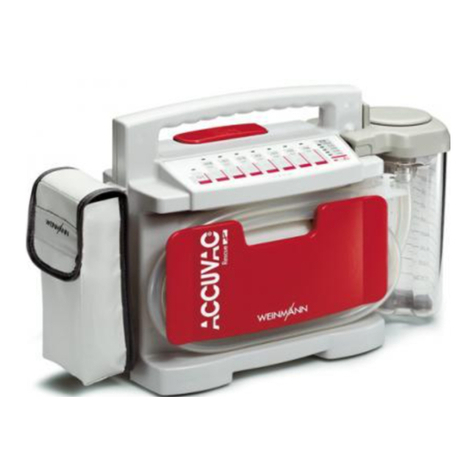
Weinmann
Weinmann ACCUVAC Rescue WM 10600 Service and repair instructions
